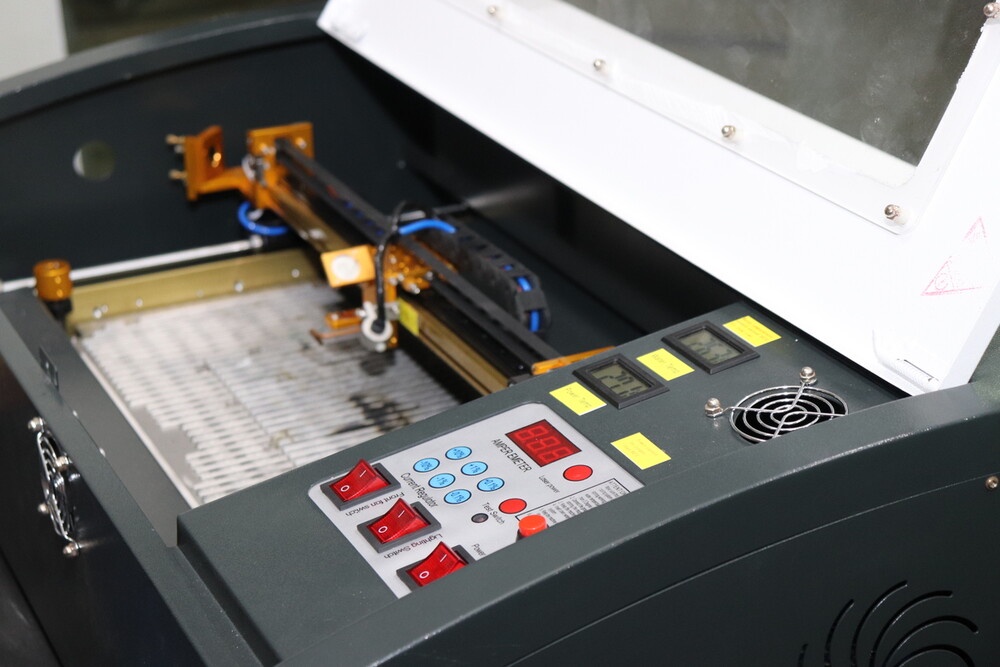Laser engraving machines have become indispensable tools for artisans, hobbyists, and professionals alike, offering unparalleled precision and versatility in creating intricate designs on various materials. While basic engraving techniques are relatively straightforward, mastering advanced techniques can take your engraving projects to the next level. In this guide, we'll explore some advanced tips and tricks for laser engraving machine users to achieve precision engraving with finesse.
A Guide to Material Properties:
Before diving into advanced engraving techniques, it's crucial to understand the properties of the materials you're working with. Different materials, such as wood, acrylic, glass, and metal, require varying laser settings and techniques for optimal engraving results. Take the time to experiment with different materials and adjust the laser settings accordingly to achieve the desired depth, contrast, and texture in your engravings.
Utilizing Rotary Attachments:
For cylindrical or curved objects, such as bottles, glasses, or pens, consider using a rotary attachment with your laser engraving machine. Rotary attachments allow you to engrave designs around the circumference of cylindrical objects with precision and consistency. Experiment with different rotational speeds and laser settings to achieve seamless and symmetrical engravings on curved surfaces.
Raster vs. Vector Engraving:
One of the key distinctions in laser engraving is between raster and vector engraving techniques. Raster engraving involves scanning the laser beam across the surface of the material in a back-and-forth motion, similar to how an inkjet printer operates. This technique is ideal for shading, gradients, and intricate patterns. On the other hand, vector engraving involves following the outlines of shapes and designs with a continuous laser beam, resulting in crisp, clean lines and sharp details.
Advanced Image Processing Techniques:
To achieve high-quality engraving results, it's essential to optimize your digital designs using advanced image processing techniques. Experiment with adjusting the contrast, brightness, and sharpness of your images to enhance the clarity and definition of the engraved details. Additionally, consider using dithering techniques to simulate grayscale shades and achieve smoother transitions in your engravings.
Multiple Pass Engraving:
For deep or detailed engravings, consider using the multiple-pass engraving technique. Instead of attempting to engrave the entire design in a single pass, divide the engraving into multiple passes with gradually increasing power and speed settings. This allows for deeper penetration into the material and finer control over the engraving depth, resulting in more precise and consistent results.
Masking and Surface Preparation:
Masking the surface of the material before engraving can help protect it from smoke residue, heat damage, and discoloration. Use masking tape or specialized masking materials to cover the areas of the material that you don't want to be engraved. Additionally, ensure that the surface of the material is clean, smooth, and free from debris to achieve optimal engraving results.
Fine-Tuning Laser Parameters:
Achieving precise engraving results often requires fine-tuning the laser parameters, such as power, speed, and frequency. Take the time to calibrate your laser engraving machine and experiment with different settings to find the optimal combination for your specific materials and designs. Keep detailed records of your settings for future reference and reproducibility.
Incorporating 3D Engraving Techniques:
For added depth and dimensionality in your engravings, consider incorporating 3D engraving techniques. This involves adjusting the laser focus and power settings to create varying depths within the material. Experiment with layering multiple passes at different depths to create intricate relief effects and textured surfaces.
Customizing Engraving Effects:
Don't be afraid to experiment with custom engraving effects to add visual interest and uniqueness to your projects. Explore techniques such as color filling, halftone engraving, and inverse engraving to achieve eye-catching effects and creative interpretations of your designs.
Continuous Learning and Experimentation:
Finally, the key to mastering advanced engraving techniques is continuous learning and experimentation. Stay curious, explore new ideas, and don't be afraid to push the boundaries of your creativity. Attend workshops, participate in online forums, and collaborate with fellow engraving enthusiasts to expand your skills and knowledge.
Final Thoughts:
Level up your laser game! Mastering those advanced techniques takes a blend of smarts, artistic vision, and a keen eye for detail. Understanding how different materials react is key, and tweaking your digital designs unlocks even more possibilities. Explore those fancy engraving tricks, and you'll be etching masterpieces with laser precision in no time. Keep honing your skills, stay inspired, and watch your creativity erupt in a laser light show!


No comments yet